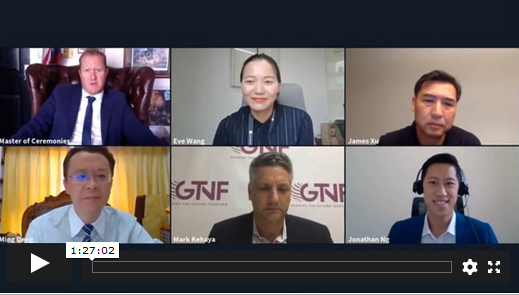
In their comparatively short time in the market, electronic nicotine-delivery systems (ENDS) have revolutionized the consumption of nicotine. While the next big thing in the category remains anyone’s guess, the continuous developing pipeline of these products shouldn’t be underestimated. In the early days, a lot of innovation was inspired by consumers; these days, new developments mostly come from the leading ENDS manufacturers.
Regulations across the world have so far been rather friendly toward innovations, creating an open atmosphere for the industry to innovate, noted panelist Ming Deng, a professor at Yunnan University. In the U.S., the world’s largest market for e-cigarettes, which is often pointing the way for policymaking in other countries, all innovations are now regulated under the Food and Drug Administration’s (FDA) premarket tobacco product application (PMTA) guidance.
Critics say the long-winded, costly PMTA approval process was inherently designed to stifle innovation. Jon Glauser, co-founder and chief strategy officer at Demand Vape, believed the market would adjust but that it would take time for U.S. consumers to get new products.
Eve Wang, vice president of Shenzhen Smoore Technology Co., expected future innovation in the U.S. to focus more on demand of the existing consumer following FDA approval requirements. She was confident that U.S. consumers would still have choices for devices and e-liquids as companies could plan innovation rather than rushing into something.
James Xu, CEO of Avail Vapor, said that with FDA approval as a barrier, small players would disappear, but bigger players would invest more. Furthermore, they were able to collect data in, for example, Asian markets in order to access the U.S. market. Development of new products, he stated, now was a more meaningful, thought-through process.
While the time PMTA orders take to be processed (they can take up to two years) represents a major hurdle for innovations to be marketed, the guidance has led to significant investments in ENDS manufacturers’ in-house lab facilities, enabling them to better evaluate their products. Due to FDA regulation, the amount of scientific data and studies on ENDS has increased significantly, which panelists hoped would contribute to the public’s understanding and differentiation between ENDS and combustible cigarettes.
For the switch from cigarettes to ENDS, flavor bans or partial bans in the U.S. were counterproductive, according to the panelists. A large variety of flavors offering former smokers more choice is pivotal to the category as only a small percentage of first-time switchers is interested in tobacco flavors. Besides, studies have shown that smokers who start using ENDS without tobacco flavors are more likely to stay away from combustible cigarettes. The benefit of flavor bans, however, was that they forced e-liquid manufacturers to work on their tobacco flavor liquids, Deng said. If that happened, he predicted a switch time 10 times as high as the current one.
As far as ENDS sales in 2019 and 2020 are concerned, Glauser spoke of a perfect storm: Last year’s EVALI crisis, followed by partial flavor bans, PMTA regulation and the Covid-19 pandemic, have had quite an impact on the U.S. vapor industry. Jonathan Ng, global head of external affairs for Relx Technology, criticized the misinformation spread during the EVALI crisis, saying that more consumer education was needed and required to be allowed. For the better information of the public, Deng suggested publications on ENDS in leading magazines such as Nature whereas Glauser saw the responsibility of consumer education with the industry.










